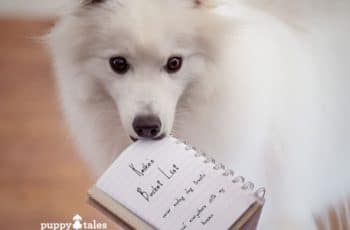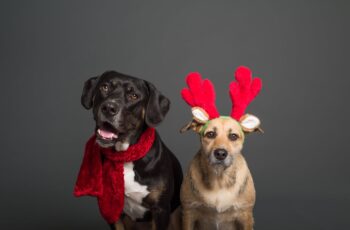You are gleefully walking your dog to the park on a sunny afternoon. The weather is optimal and everyone is out and about with their fluffy best friend. The dogs are delighted to see each other as they engage in their traditional circle dance of rear-end sniffing.
Snout-to-booty here, snout-to-booty there. Wag the tail, “woof-woof,” and off you go.
This curious tradition we’ve grown accustomed to is repeated every time our dog comes across another dog. We understand they’re saying hello and performing their canine greeting ritual. But have you ever stopped to wonder “Why the butt?”
Sniffing Each Other Out
Inside a dog’s snout lies a highly developed piece of biological technology: their stunning sense of smell. Dogs have 150 million olfactory receptors, which is about 30% of their brain mass devoted to scent recognition.
A dog relies heavily on their sense of smell to perceive and recognize their surroundings. So, they gather a stunning amount of information from their olfactory receptors. They store this information in their brain and remember each scent with a staggering amount of detail.
“Hello! Nice to Smell you!”
Each dog has an aroma that is unique to them (much like how our voices are unique to us). So, when smelling each other, they’re processing information.
All a dog needs to know about another dog is concentrated on the scent coming from their hind area. This information includes friendship compatibility, whether or not they’ve met before, and also if they’re ill or should not be bothered with.
But Why The Butt?
A question many people have but few dare to ask is: Why the butt? Couldn’t they smell each other’s ears, paws, bellies, or mouths?
There’s a very good reason why dogs smell each other’s back-ends. Inside a dog’s rectum, there is an anal gland that releases a chemical that contains detailed information about them.
This scent is released through the anus as a dog poops, and only dogs can perceive it. We cannot smell it because it gets back-tracked by the odor of the dog’s stool. (Unless your dog has problems in this anal gland, in which case you will smell it.) This invisible trail provides dogs with everything they need to know about their canine counterparts.
How Dogs Process Scent So Keenly
If we take a deeper dive into how a dog smells we’ll quickly come across a fascinating organ called the Jacobson’s organ (or the Vomeronasal organ). This organ is present in many mammal species and functions as a secondary olfactory organ that processes chemical communication.
The Jacobson’s organ is located inside the nasal cavity, extending towards the roof of the mouth. Its nerve cells connect to the brain like the ones found in the olfactory tissue of the nose. But, these nerve cells have receptors that respond to different types of chemicals: They’re connected to the area of the brain that’s in charge of mating. It will even respond to undetectable odors.
A dog will be able to tell if another dog of the opposite sex is available for breeding through Jacobson’s organ. It identifies pheromones, which are fascinating chemical signals that only dogs pick up on.

Pheromones: Invisible Chemical Signals
Each pheromone is different according to circumstance. For example, a nursing dog will release a pheromone that signals to her pups that she is near and that all is safe.
If two dogs haven’t seen each other for years they will recognize each other by the pheromones they release. Even if their smell has changed through the years, dogs will notice this too, making smelling a practical way of catching up.
Who Smells First: A Way of Showing Dominance
We’ve covered what’s going on biologically while a dog sniffs a butt (they’re gathering information). But is there more to it? What does this action say about their behavior?
See also

Dogs may smell each-others rear sides as a display of dominance. The dog who makes the first move to smell the hind area of another dog is showing they’re the dominant dog, while the dog whose back end is being smelled is the submissive dog.
Could this be why they sometimes walk around in circles to see who gets to sniff first? Is it a race for dominance?
We don’t know for sure. It is, however, an action that sets the configuration of the relationship, assigning roles that allow each dog to know exactly how to behave around each other.
Dog talk, plain and simple. A dog displaying dominance will smell first, stop and retreat. At this moment they may also growl, and that’s a good sign for you to pull your dog away and walk in another direction.
Some dogs might be slightly apprehensive about sharing their information, so they may sit and cover their behind with their tail. Think of it as a canine way of activating a VPN.
Calming Mechanism
And yet there is even another reason why dogs sniff each other’s bottom ends: As a calming mechanism. This ritual is so innate to their canine tradition that it serves as a soothing mechanism and stress relief. Think of it as their way of socializing and snapping out of their shell.
Conclusion
Dogs are very social animals that generally love coming across other dogs. Smelling butts is how they communicate: how they learn about each other, their way of telling each other stories, and what they’ve been up to. It’s a dog’s undisputed trademark and we should let them do it with freedom.


